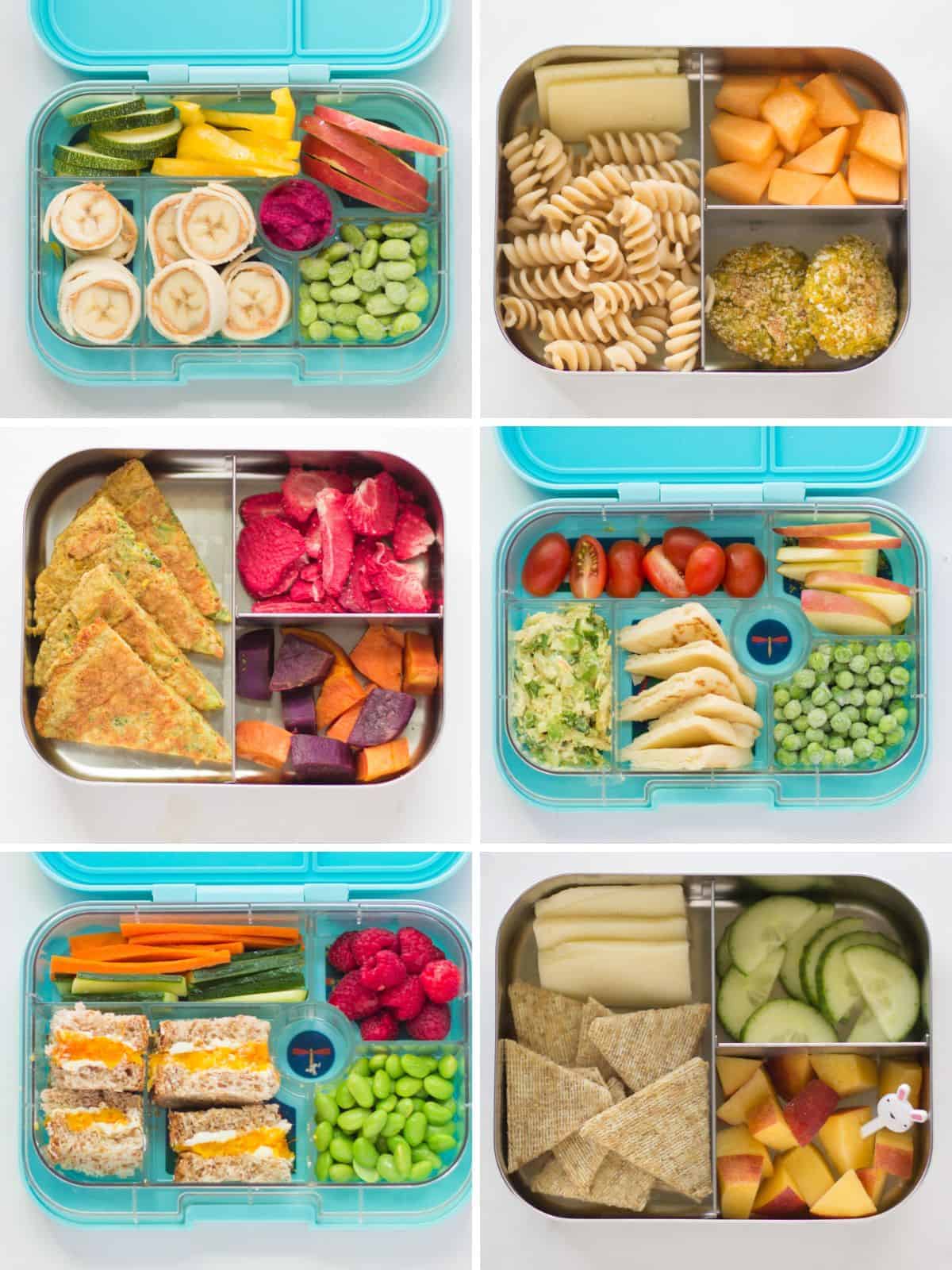Wholesome Lunch Box Ideas for Kindy Kids
Welcome to the ultimate guide for crafting delicious and healthy lunch boxes for your little kindergartener! As a parent, you understand the importance of fueling your child’s day with the right nutrients to help them learn, play, and grow. Are you running out of ideas or looking to add a twist to your kiddo’s midday meal? Worry not! Our guide is packed with creative lunch box ideas that are as fun to eat as they are to make. ???
Quick & Easy Lunch Box Heroes
Time is of the essence, especially during those bustling morning hours. That’s why we have compiled a list of quick-fixes that don’t compromise on nutrition or taste. From finger foods to mini wraps, these options will leave your little ones excited for lunchtime:
- Cheese and Turkey Roll-Ups: Swap traditional sandwiches for these high-protein roll-ups that are perfect for little hands to grasp. They’re mess-free and a good source of calcium.
- Veggie Sticks and Hummus: Carrots, cucumbers, and bell peppers provide a rainbow of nutrients. Pair them with hummus for a tasty way to get in those essential vitamins and minerals.
- Mini Fruit Kabobs: Make fruit more fun by threading pieces onto skewers. Mix it up with seasonal fruits. Ald though always ensure to make these age-appropriate and safe — cutting off the sharp ends of skewers or using popsicle sticks is a wise idea.
- Whole Grain Pita Pocket: Stuff these with your child’s favorite fillings — think shredded chicken, lettuce, and cheese for a well-rounded meal.
Nutritionally Balanced Lunch Magic
While deliciousness is key, nutritional balance is the magic ingredient for a successful kindy lunch box. Children at this age require a mix of carbohydrates, proteins, fats, and a variety of vitamins and minerals to support their energy levels and development. Here’s how to make sure their lunchbox ticks all the nutritional boxes:
- Go for Whole Grains: Whole grain breads, wraps, or crackers not only provide fiber but sustained energy to help them focus throughout the day.
- Lean Proteins: Think beyond deli meat — chickpeas, tofu, and boiled eggs are excellent protein sources that keep kids full and focused.
- Love Those Fruits and Veggies: Offer a variety of colors to ensure an array of nutrients. Presentation can make all the difference, so get creative with shapes and arrangements.
- Healthy Fats: Include items like avocado slices, nuts (if allowed), or a small container of olives to provide the essential fats needed for brain health.
Food Safety Fundamentals
Food safety is paramount when preparing kindy lunches. Here are some essential tips to keep your child’s lunch fresh and safe until it’s time to eat:
- Invest in an insulated lunch bag and include an ice pack to keep perishable foods like yogurt, cheese, and meat cool throughout the day.
- Teach your child the importance of washing their hands before eating and consider packing some wet wipes for added cleanliness.
- Opt for easy-to-open containers and ensure that younger children especially can manage them independently. This encourages them to eat and keeps food sealed properly until it’s time to enjoy.
Armed with these lunch box ideas, you’re sure to become the ultimate lunchtime hero in your kindy kid’s eyes. Remember, the goal is to make lunchtime stress-free, delicious, and nutritious. Stay tuned for even more tips, detailed recipes, and playful twists on classic lunchtime favorites that will keep your kids happy and healthy.
Follow our guide, stay inspired, and watch your little one’s lunch box come back empty day after day! ???

Essential Tips for Prepping Kindy Lunch Boxes
Before we dive into the delightful recipes and food combinations for your kindergartener’s lunch box, here are five key insights that every parent should consider for crafting the perfect meal:
- Allergies and Dietary Restrictions: Always be aware of any food allergies or dietary restrictions, both your own child’s and those of other kids in the class. Kindergartens often have policies about nut-free environments to protect children with allergies. Regular communication with the school and other parents will ensure everyone’s safety and wellbeing.
- Involve Your Kids: Turn lunch preparation into a bonding activity. Kids who help choose and prepare their foods are more likely to eat them. It’s a wonderful opportunity to discuss healthy food choices and the importance of nutrition while instilling independence and confidence in your little ones’ own abilities.
- Keep It Simple and Varied: Simplicity is key—complex recipes are not necessary for a nourishing meal. The inclusion of a simple variety of foods can prevent lunchtime boredom and ensure a range of nutrients. Use cookie cutters for fun sandwich shapes or create a theme for each day of the week for an enticing twist.
- Portion Control: Presenting appropriately-sized servings for small tummies prevents waste and ensures your child isn’t overwhelmed. It also teaches them about moderation. A kindergartener’s lunchbox might typically contain a half sandwich, a small salad, a serving of fruit, and a snack-size treat.
- Food Literacy: Use lunchtime as an educational tool. Include items that teach children where their food comes from—for instance, seasonal fruits and veggies. Also, consider including fun food facts or a note of encouragement; it makes the meal more engaging and is something children look forward to.
Make It Fun: Creative Lunch Box Inspirations
Now, let’s get those lunch boxes packed with joy! Here, we’ll explore some creative ideas that will wow your little ones and inspire their taste buds:
- Bento Boxes: Introduce variety and novelty with a bento-style lunch box. Each compartment can hold different treats, making meals interactive and fun.
- Rainbow Wraps: Let color guide your ingredients. Fill whole wheat wraps with colorful veggies, shredded chicken, or fish to cover a wide spectrum of nutrients.
- Sweet Potato Muffins: Sneak in some veggies with muffins that offer both nutrition and sweetness—perfect for a pick-me-up snack.
- Shape-Shifting Foods: Transform sandwiches and fruit into stars, hearts, or animals. It’s visually appealing and might make a new food seem less daunting to a hesitant eater.
Lunch Box Logistics: Practical Considerations
Let’s talk about making lunchtime seamless and stress-free. Here are some actionable tips for parents to consider:
- Amp up the convenience by prepping ingredients in bulk at the start of the week. For instance, chop veggies and store them in the fridge, hard boil eggs, or make a batch of granola bars.
- Reusable containers not only make environmental sense but also encourage a wide variety of food types. They keep food separate and fresh until it’s time to eat.
- Choosing a sturdy, easy-to-clean lunch box can save you time, money, and hassle in the long run.
- Think about the ease of eating. Foods should be easy for little hands to handle and not too time-consuming to eat, so there’s ample time for play.
By keeping these factors in mind, you can simplify the lunch packing process, making it an enjoyable and enriching part of your daily routine. Don’t forget to add a dose of love, because that’s the secret ingredient that makes every lunch box special.
Inject some creativity, pay attention to nutritional balance, ensure food safety, and maintain open communication with your kindy. With these tips, you’re all set to provide a lunch that’s as thoughtful and unique as your child. Now go ahead, mix and match, and create lunch boxes that are sure to be the talk of the kindy tables!
See more great Things to Do with Kids in New Zealand here. For more information see here
Disclaimer
The articles available via our website provide general information only and we strongly urge readers to exercise caution and conduct their own thorough research and fact-checking. The information presented should not be taken as absolute truth, and, to the maximum extent permitted by law, we will not be held liable for any inaccuracies or errors in the content. It is essential for individuals to independently verify and validate the information before making any decisions or taking any actions based on the articles.




